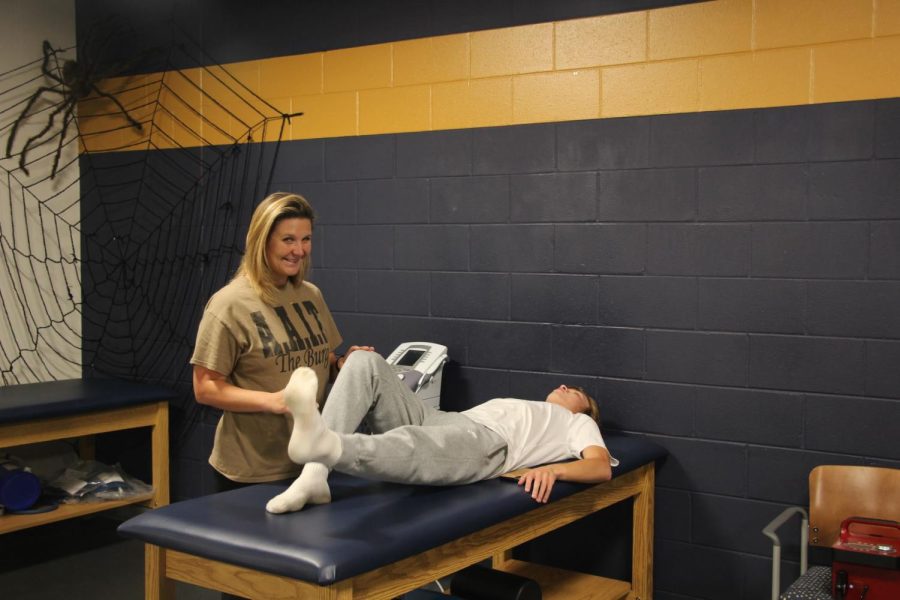The Road to Recovery
The importance of stretching and healing after an injury
SHS trainer April Taylor works through appropriate stretches for an athlete.
October 17, 2022
Though there are many different types of sports across the world, each different through cultures and rules, there is one thing that they have in common: injuries. When a player suffers an injury, no matter how minute or serious, going through the proper steps is crucial for a strong recovery.
While some injuries such as sprained ankles, bruises or scrapes can be considered as minor and take a short amount of time to heal, larger injuries such as ACL tears, fractures or concussions take much longer to heal, and have a lengthy recovery procedure.
In many contact sports, such as football, soccer, hockey and lacrosse, concussions are a common injury. Anne Healey (9) plays lacrosse and suffered from a concussion in the spring of 2022.
“I went up to get the ball, and I fell and had another girl fall on top of me and slam my head into the ground. I got a severe concussion and had to sit out for the first part of the lacrosse season. The recovery procedure that I had to do for my concussion was very long and grueling. My concussion affected my mindset about my sport for a little bit after I returned. I realized that I wasn’t as confident or comfortable, and I was scared of doing anything that involved contact,” Healey said.
Serious injuries do not stop at high school athletes; many college and professional level players have suffered from concussions and fractures that have had them bench from games, or even the entire season if the injury is serious enough.
Tua Tagovailoa, the quarterback for the Miami Dolphins, recently suffered a concussion during game against the Cincinnati Bengals. After Tagovailoa was sacked, he returned to playing despite the concussion. This event has sparked debates on whether or not Tagovailoa should have played, and when the concession protocol should begin.
According to espn.com, in an interview with the NFL Network on Tagovailoa’s injury, NFL chief medical officer Dr. Allen Stills discussed Tagovailoa’s injury and the controversy over its following of the concussion protocol.
“We’ll review all of the video; we’ll review all of the data. And the purpose of that review is to make sure that the concussion protocol was followed,” Stills said.
Whether an athlete plays professionally, college level or high school sports, having a support system and a strong health system in place is very beneficial. Sports trainers help athletes with minor injuries as well as serious ones. Trainers can help an athlete ice a wound, bandage a scrape, or recover from a serious injury such as a muscle tear or a concussion.
Jeff Cashman, the team physician for the Vikings football team, has treated a multitude of injuries both on the field and off of it.
“Stretching and warming up (not going full speed immediately) are tremendous factors in reducing injuries in practice and competition. The other factor that is often ignored is the importance of rest and recovery. Athletes push themselves further during competition and that can cause damage to muscles, ligaments and tendons and the body has processes to heal, but the muscles need that rest to heal properly. Athletes are competitive and want to play, but if you miss a week or two after the first concussion to properly heal, that can spare you from missing a month with a second concussion that happens before you have recovered,” Cashman said.





